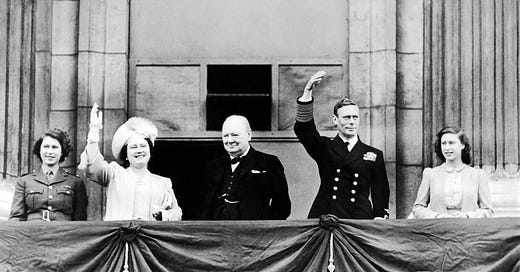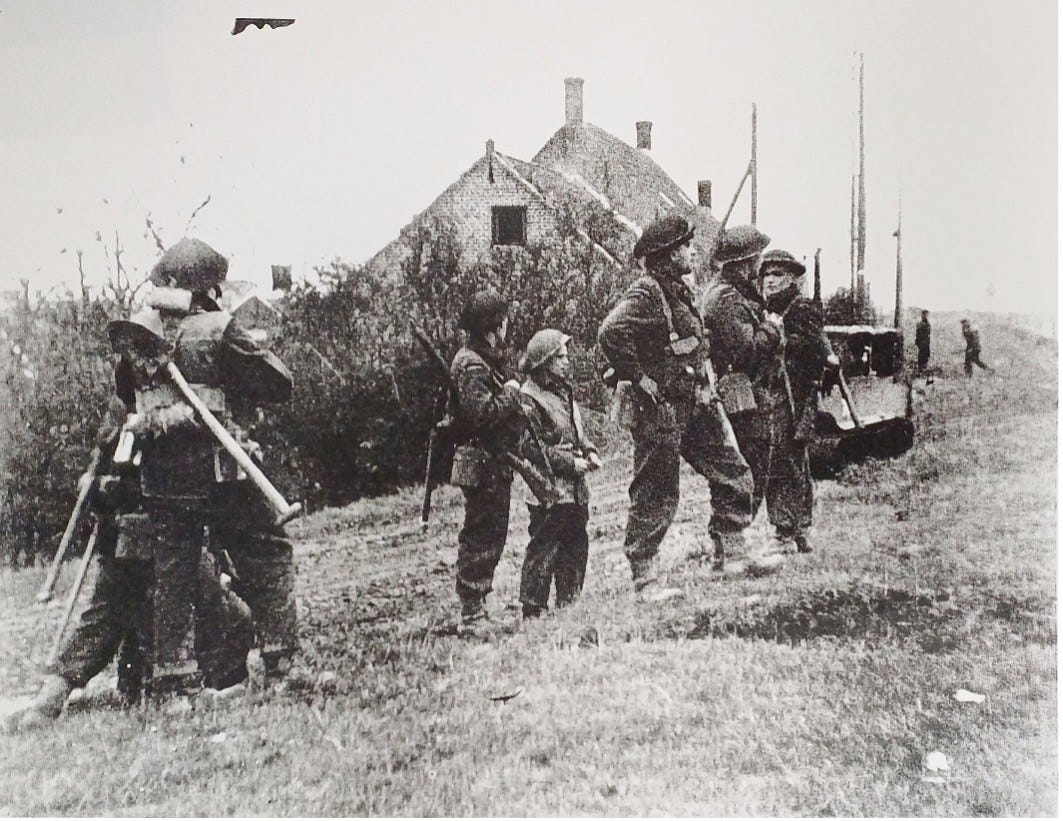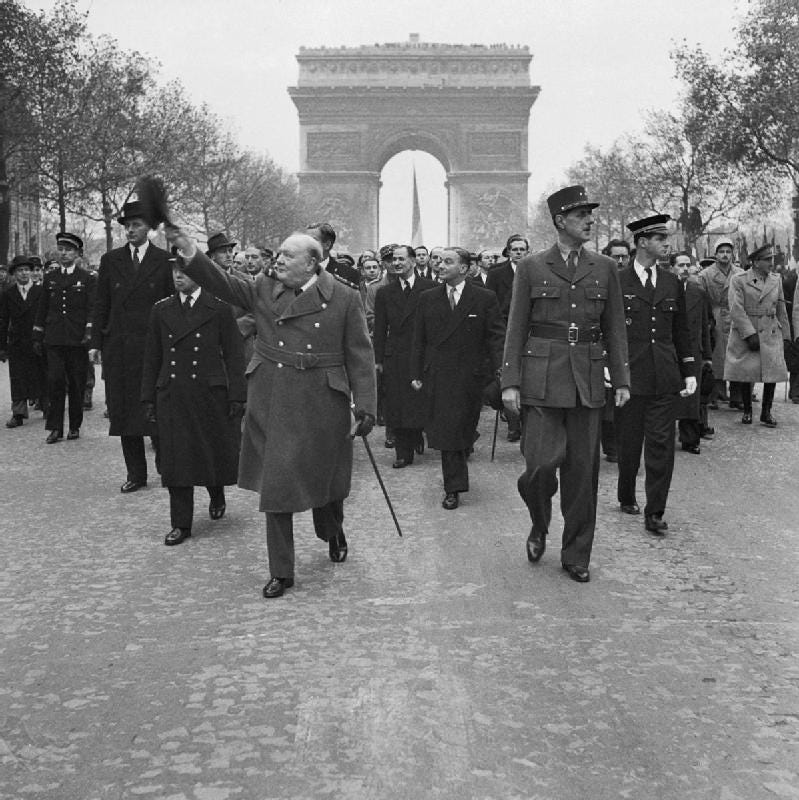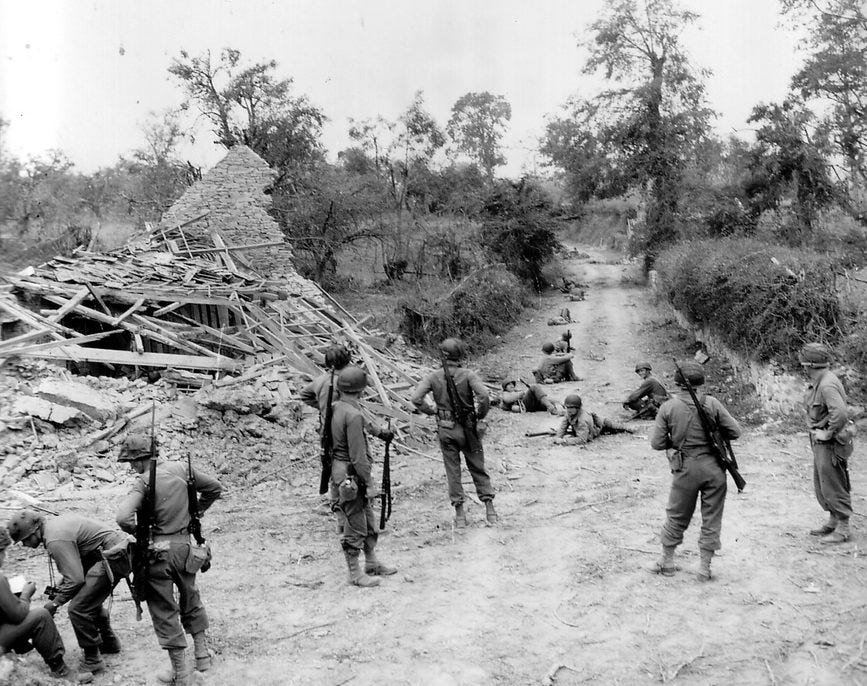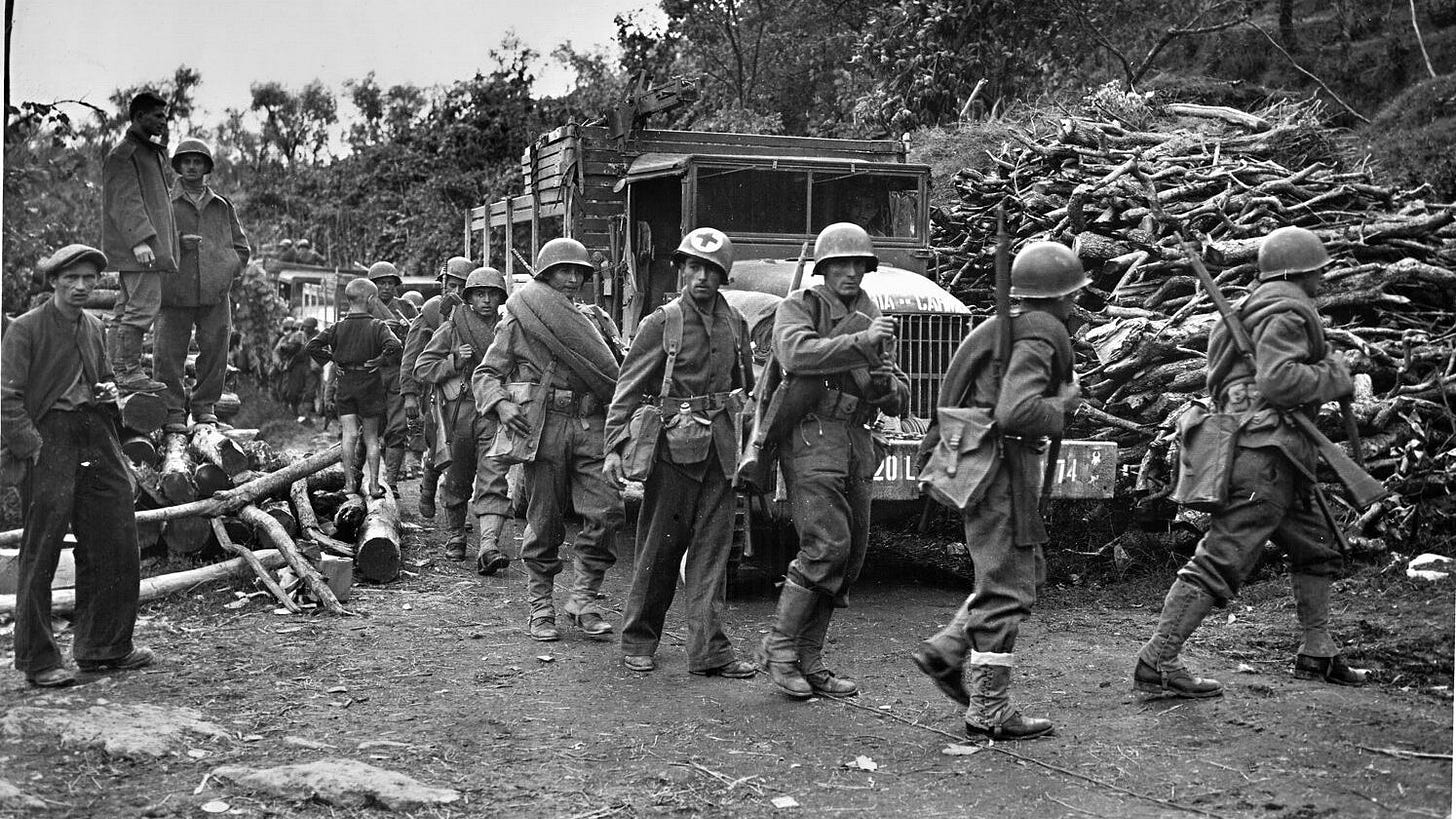Victory in Europe: The Allied Road to VE Day
Victory in Europe: The Allied Road to VE Day
The morning of 8th May 1945 dawned with a rare silence across the battlefields of Europe. The great struggle that had consumed the world for nearly six years was finally at an end. Across the towns and cities of the Allied nations, people poured into the streets, embracing the knowledge that the war in Europe was over. But victory had not come without sacrifice. From the windswept beaches of Normandy to the ruins of Stalingrad, from the frozen forests of the Ardennes to the skies over Britain, the forces of the Allied nations had fought, bled, and triumphed together. Each nation had played its part, each had written its chapter in the long road to victory.
The British Empire and Commonwealth: From the Beaches to the Battlefields
For Britain and its vast empire, the road to VE Day had been marked by resilience, determination, and unyielding defiance. The Battle of Britain in 1940 had been the first great stand against Hitler’s war machine, where the Royal Air Force, bolstered by Canadian, Australian, New Zealand, South African, and Polish pilots, had broken the Luftwaffe and safeguarded Britain from invasion. Without that victory in the air, the fight for Europe might never have begun.
On D-Day, 6th June 1944, British forces stormed Gold and Sword beaches in Normandy, pushing inland despite fierce resistance. The Canadians, landing at Juno Beach, fought with tenacity, securing a vital bridgehead for the Allies. British and Commonwealth troops played a crucial role in the subsequent liberation of France, battling through the dense hedgerows of Normandy and later breaking the German defences at the Falaise Pocket.
In Italy, British and Commonwealth soldiers had faced some of the toughest fighting of the war. At Monte Cassino, they fought a brutal battle against entrenched German forces, eventually breaking through in May 1944. The Italian Campaign had been long and bitter, but the Allies had pressed northward, with British, Indian, New Zealand, and South African troops enduring harsh conditions in their relentless pursuit of victory.
Britain’s elite Commando forces, trained for daring raids, struck deep behind enemy lines throughout the war. They played a key role in operations across occupied Europe, from the cliffs of Normandy to the fjords of Norway. And in the audacious Operation Market Garden, British paratroopers leapt into Holland, attempting to seize the crucial bridges that would open the road to Germany. Though the battle ended in failure at Arnhem, their bravery was unquestionable.
By 1945, British forces had turned their attention to the German heartland. The bombing campaign against Hamburg and other cities had crippled German industry, and the final push across the Rhine saw British and Canadian troops fighting their way towards the Nazi regime’s final stronghold.
The Canadian impact cannot ever be discounted. By 1945, they were functionally independent, with the passing of the 1931 Statute of Westminster making them a Dominion on even legal standing with the UK. Though it wasn’t automatically bound to declare war as it was in 1914, it still sided with the mother country and declared war shortly after Britain did.
It contributed to the Battle of Britain, the Atlantic convoys and patrols, and suffered the most in the Dieppe Raid. Poorly planned and executed, the lessons learnt helped in shaping Operation Overlord, which in turn took part in. Its troops were under overall British command, but they predominated on Juno Beach, which, along with Gold and Sword (the British beaches), had few casualties.
Canadian troops were crucial in the Battle of Caen and liberated much of northern France, Belgium and the Netherlands. They also fought under British command in Italy, part of the successful push in what Churchill called Europe’s soft underbelly.
France and the Free French: From Dunkirk to the Liberation of Paris
For France, the war had been one of crushing defeat followed by glorious redemption. In 1940, the swift German Blitzkrieg had overrun the country, forcing a desperate retreat to the beaches of Dunkirk. While the Royal Navy and civilian boats carried hundreds of thousands of British and French soldiers to safety, French rearguard units fought valiantly to hold back the advancing Germans, sacrificing themselves to buy time for the evacuation.
Following the fall of France, the Free French, under Charles de Gaulle, carried on the fight. Scattered French forces joined the British in North Africa and later in Italy, proving their resolve in battles such as Monte Cassino.
But their greatest moment came in August 1944, when the Free French 2nd Armoured Division spearheaded the liberation of Paris. The city had endured four years under Nazi rule, but as the French tanks rolled down the Champs-Élysées, Parisians erupted in celebration. The moment was not just a military triumph but a symbolic one – France had reclaimed its soul.
The Americans: Breaking Through in the West and the Italian Campaign
The United States of America, from 1942 onwards, participated in the strategic bombing offensive. It, with the Royal Air Force (RAF), bombed German infrastructure thus hampering the Nazi war effort.
The United States also continued the regular supply of items to Britain and the USSR, furthering its bond of alliance with them.
General Dwight Eisenhower, later President of the United States, was chosen to be the Supreme Allied Commander, and thus head of all Allied forces in Europe. It was deemed fitting that an American was made such, due to their greater materiel and personnel weight. Moreover, Eisenhower was chosen because of his diplomatic skills and charisma, and the capacity to bring disparate figures together.
For the United States, its participation in the Normandy landings entailed landings at Omaha and Utah beaches on D-Day. The fighting was brutal, particularly at Omaha, where American soldiers faced withering machine-gun fire. Yet they pressed forward, securing the beaches and pushing into the Norman countryside.
In the summer of 1944, the Americans launched a ferocious offensive at St. Lô, where the 29th Infantry Division battled through shattered streets and thick bocage hedgerows to break the German defensive lines.
By winter, the Germans launched one last desperate offensive—the Battle of the Bulge. In the forests of the Ardennes, the besieged town of Bastogne became the centre of the fight. Surrounded by German forces, the 101st Airborne Division refused to surrender. Their resolve held until General Patton’s forces arrived to relieve them, turning the tide of the battle.
The Americans had also played a pivotal role in the Italian Campaign. At Anzio, they faced relentless German counterattacks but eventually broke through, leading to the liberation of Rome.
The Soviet Union: The Eastern Front and the Fall of Berlin
On the Eastern Front, the Soviet Union had borne the brunt of the war, facing the full force of Hitler’s armies. The turning point came in 1942 at Stalingrad, where the Red Army, after months of savage urban warfare, encircled and destroyed the German 6th Army. It was a shattering defeat for Hitler and marked the beginning of the German retreat.
Soon after, the Soviets launched their counteroffensive at Kursk, the largest tank battle in history. In the summer of 1943, waves of Soviet T-34s smashed through German lines, repelling Hitler’s last major offensive in the east and seizing the strategic initiative.
By 1945, the Red Army had pushed deep into Germany, encircling Berlin in April. The final battle of the European war was waged in the streets of the Nazi capital, as Soviet troops stormed the Reichstag and raised the red flag over Hitler’s shattered empire.
As German forces collapsed, Soviet and American troops met at Torgau on the Elbe River on 25th April 1945, a symbolic moment that marked the unity of the Allies in victory. Meanwhile, British and Soviet forces raced towards the Baltic, converging on Lübeck, where they cut off any German escape to Scandinavia.
The USSR took a massive human toll in the war. Many millions of troops and civilians died, in what was a struggle for life in more ways than one. Considering Hitler’s views on Slavs and his need for Lebensraum, the USSR faced a struggle that they needed to win for more than just national pride or sovereignty.
Stalin proved a valuable ally to the British and Americans in Europe, as the British supplied Arctic convoys to the USSR, and the USA's Lend-Lease aid greatly helped in pushing the Germans back from Soviet lands.
The Brazilians: A Crucial Role in Italy
Often overlooked, the Brazilian Expeditionary Force played a crucial role in the Italian campaign. Arriving in 1944, they faced the formidable German Gothic Line, where they engaged in brutal combat in the mountains. At Monte Castello, they proved their mettle, storming heavily fortified positions under relentless enemy fire. Their victory contributed to the eventual Allied breakthrough in Italy, showcasing Brazil’s dedication to the cause of freedom.
The Road to Victory
As 1945 dawned, the end was in sight. The Soviets closed in on Berlin from the east, while British, American, and Free French forces pressed from the west. In April, the Allies linked up at Torgau, sealing Germany’s fate. Hitler, recognising the inevitability of defeat, took his own life.
By 8th May, Germany had surrendered.
Across Britain, bonfires were lit, and bells rang out in celebration. In Trafalgar Square, people danced in the streets, cheering Winston Churchill as he celebrated from a balcony above. In Paris, the tricolour flew proudly over the city once more. In the United States, crowds gathered in Times Square, sharing embraces of joy. In Moscow, Red Army soldiers celebrated their triumph after years of unimaginable sacrifice.
Victory had come at a terrible cost. Millions had perished, cities lay in ruins, and Europe was forever changed. But the men and women of the Allied nations had fought for something greater than themselves – they had fought for the liberation of a continent, for the defeat of tyranny, and for a world that would never again succumb to the horrors of total war.
VE Day was not the end of all suffering, nor did it erase the scars of war, but it was a day of triumph, a day when the world could finally exhale. The long night was over. Europe was free.
